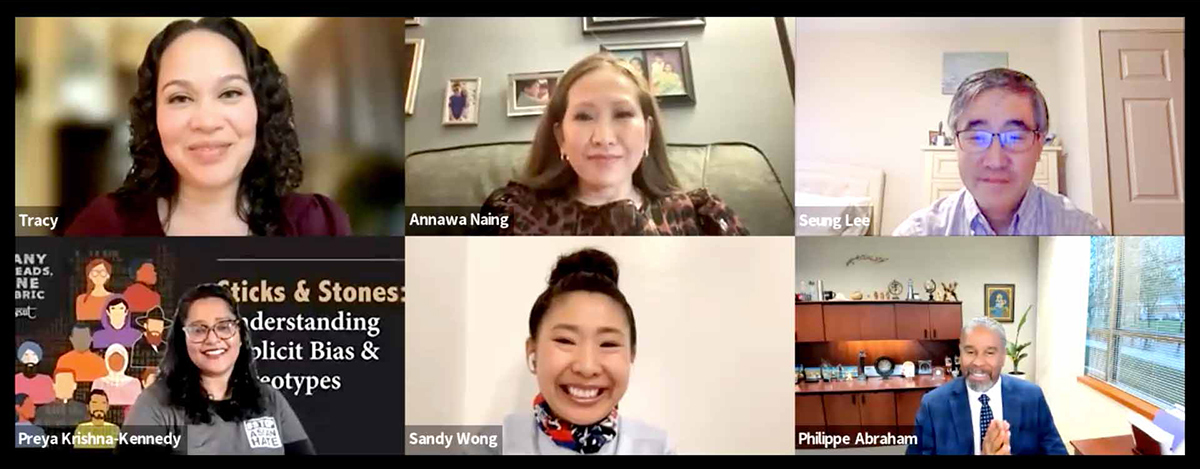Representation key to breaking down stereotypes about AAPI students, educators
he Asian American and Pacific Islander community is incredibly diverse. Its members speak hundreds of languages, hail from nearly 50 countries and have vastly different traditions, cultures, foods and religions; a one-size-fits-all approach to the community is nearly impossible. But for all their differences, as minorities in American society, AAPI individuals face many shared challenges in the classroom.
As part of a Many Threads, One Fabric event celebrating Asian/Pacific American Heritage Month in May, a panel of NYSUT members discussed some of those issues and highlighted the importance of including AAPI voices in the classroom. “Individuals of Asian and Pacific descent are often overlooked in discussions of race,” said J. Philippe Abraham, NYSUT secretary-treasurer, whose office oversees social justice initiatives for the statewide union. “We want to start a dialogue about their contributions and learn more about the different perspectives they bring to the table.”
NYSUT President Melinda Person welcomed participants and underscored the value of the event. “This is important work, and we can’t do it without dedicated members like you,” she said.
Event moderator Preya Krishna-Kennedy, Bethlehem Central Teachers Association, often felt lonely growing up as a first-generation South Asian Indian American in a predominantly white community. “I became a teacher because I wanted my students to have a better experience than I did,” she said. “I want to break down stereotypes about people who don’t fit the traditional mold of what it means to be an American.”

Tracy Cavanaugh, Cairo-Durham TA, whose mother immigrated from the Philippines said AAPI people were always portrayed as being on the receiving end of history. “Growing up I would have liked to learn about people who contributed, who fought back and led movements for change. I love to see that changing.”
Annawa Naing, UFT, a second-grade teacher at PS/IS 78Q whose parents immigrated from Burma, agrees. She was fascinated by the American civil rights movement and wondered where AAPI individuals fit in. “Where would Asian folks drink water if there were segregated fountains,” she remembers asking. “I learned about the Black and Chicano movements, but I wanted to learn about Asian movements … I didn’t learn that in the 90s when I was growing up, but I’m finding that information out now.”
Underscoring the commonalities between her Chinese family and her students’ families is an important part of her teaching, said UFT member Sandy Wong, a kindergarten teacher at PS 30x Wilton in the Bronx. As the only Chinese teacher in the building, “I like sharing stories about my family, and my culture,” said Wong noting that doing so teaches her students that, despite eating different foods or celebrating different holidays, at heart all families are very similar. She also enjoys breaking stereotypes. “I don’t have an accent and I’m loud — I debunk the myth of the quiet Asian.”
All agreed that representation is important, from reading books and learning curriculum lessons about Asian role models to being positive role models themselves. “We’re breaking down stereotypes every day simply by being in the classroom,” said Krishna-Kennedy.
To learn more about NYSUT’s Many Threads, One Fabric initiative, and to watch a recording of the AAPI History Month panel discussion, visit nysut.org/ManyThreads. The site also features links to several AAPI resources, including NYSUT’s AAPI Heritage Month poster featuring Ke Huy Quan, the 2023 Academy Award winner for Best Supporting Actor for his role as Waymond Wang in the science fiction film “Everything Everywhere All at Once.” To download a free poster, visit nysut.org/publications.